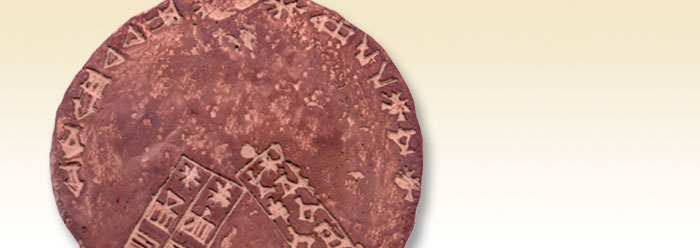The moon orbits the earth every 29.5 days or so, and the year is (roughly) 365.25 days in length. It is an untidy arrangement that makes alignment of the lunar and solar calendars virtually impossible.1 How much simpler it would have been had God, at the creation, decreed that the year should be 360 days and the lunar month 30 days in length.
Evidence shows that God so ordained it at the beginning. The lunar year consisted of 12 months of 30 days' duration, equaling exactly the solar year of 360 days. Only after the Flood did the two calendars drop out of line with each other, necessitating numerous calendar reforms which even today have not resolved the problem.
But how can one possibly know that the pre-Flood year consisted of 12 equal months of 30 days? Today's lunar calendar doesn't consist of 12 equal months. Nor does the solar calendar. Today's lunar months are alternately 29 and 30 days, making the lunar year one of just 354 days, 11 days or more short of the present solar year. Is there evidence that the pre-Flood lunar calendar did not contain this aberration?
The evidence is found in the book of Genesis. The writer notes two specific calendar events: the exact day on which the fountains of the deep were broken up and the windows of heaven were opened (7:11), and the exact day on which the waters abated (8:3-4). The importance of this information is this: The Flood began on the 17th day of the 2nd month (7:11), and was over by the 17th day of the 7th month (8:4). That makes 5 months of 30 days duration each, which Genesis stresses by adding the day-count of 150. Five months in the "modern" (actually ancient) Jewish calendar would have been either of 147 or 148 days' duration, depending on whether the 5-month period began on a 29-day or a 30-day month.
The fact that Genesis uses here a pre-intercalationary calendar is a most important indication of its antiquity. Had Genesis been written during or after the Jewish exile in Babylon or Persia (6th-5th centuries BC), as modernists claim, it would have used the intercalationary calendar of Babylon and Persia, which, like the Jewish calendar, would certainly not have measured five months as 150 days.
Besides, the post-exilic Jews always named the months after the Babylonian fashion and would have used those names in any "edited" account. Genesis doesn't. It merely numbers the months in accordance with pre-Babylonian usage. Illustrated above is an Assyrian lunar calendar (which names the months) from circa 1800 BC. It still works, but measures the post-Flood lunar year as 354 days. The Flood account in Genesis pre-dates its manufacture.
In other words, this part of Genesis was written before the effects of the Flood--the sudden slippage between lunar and solar time and so on--began to be observed and measured.2 Thus, the calendar portrayed in its first chapters is a further evidence of the antiquity of Genesis.
References
- Even when we try, the arrangement is never perfect. The lunar month divides into the solar year roughly 12.4 times (being about, but never exactly, 11 days short of the present solar year). It doesn't get any better when we compare solar and lunar time with sidereal time, in which the fixed stars appear to go round the earth not once every 24 hours like the sun, but every 23 hours 56 minutes and 4 seconds, a slippage of nearly 4 minutes a day!
- "[T]he great Flood of Noah's day forever altered Earth's systems….With the fountains of the great deep relocating a huge volume of liquid, moving continents, possible asteroid bombardment, etc., shifting the location of much mass, the length of the day, the length of the year, and the tilt of the axis could have all changed." Morris, J. 2005. In the Early Earth, Were All the Months Exactly Thirty Days Long? Acts & Facts. 34 (12).
* Dr. Cooper, historian and author, resides in England.
Cite this article: Cooper, B. 2009. The Calendar and the Antiquity of Genesis. Acts & Facts. 38 (6): 19.

















